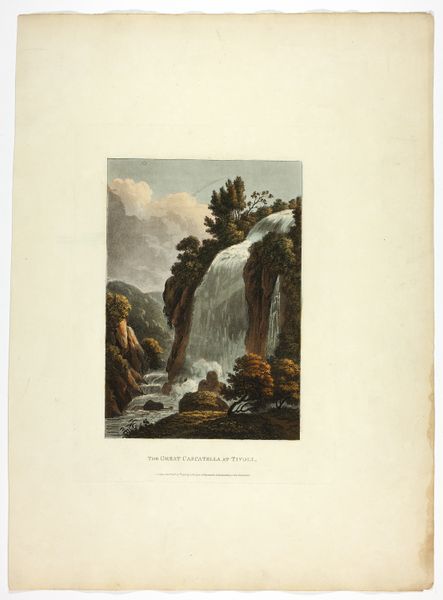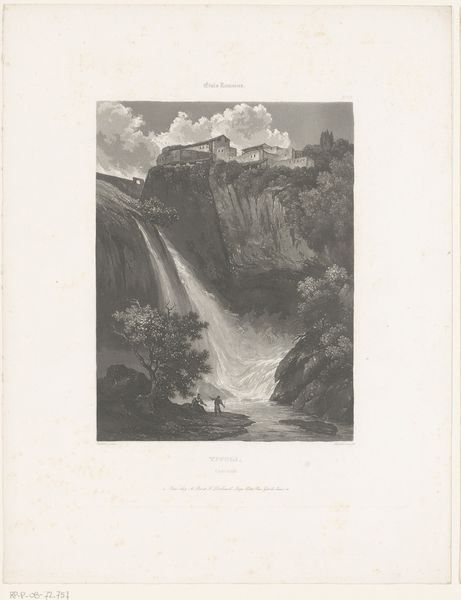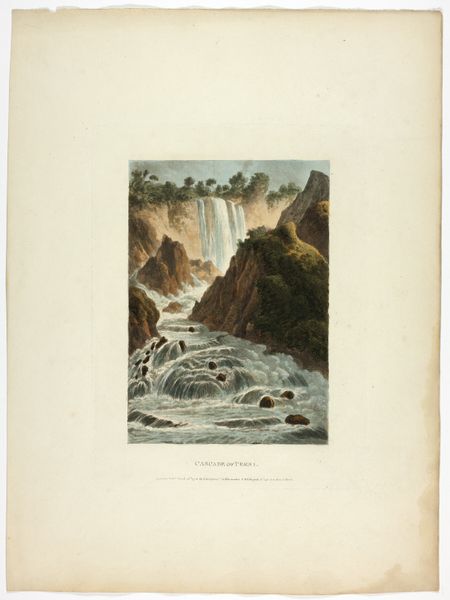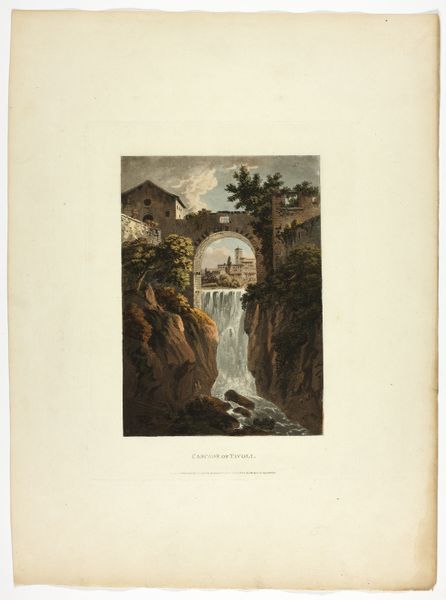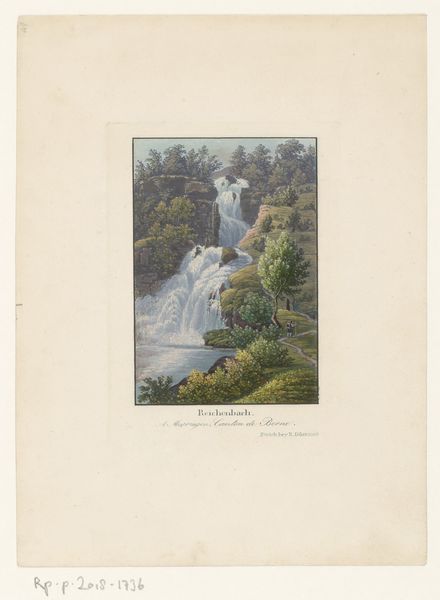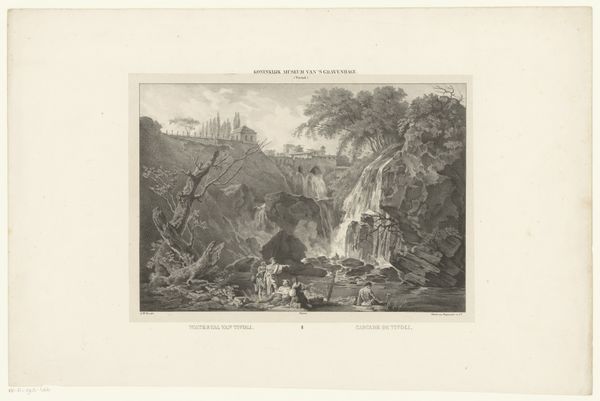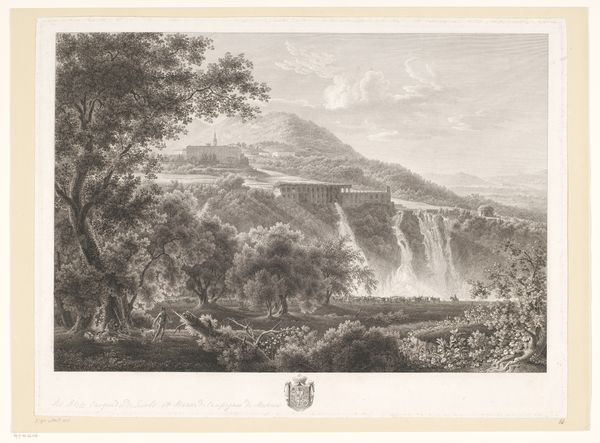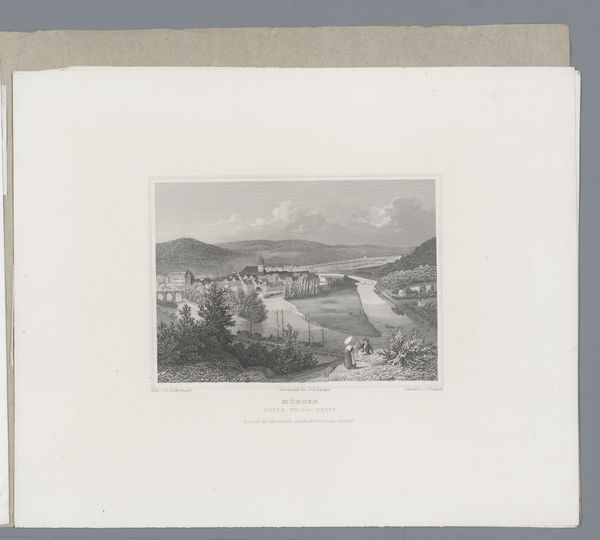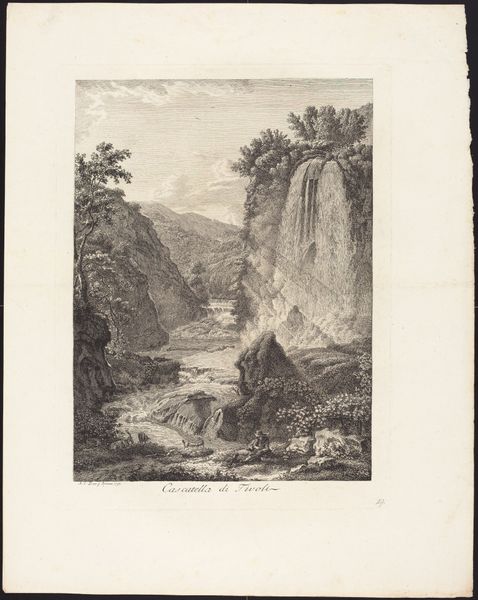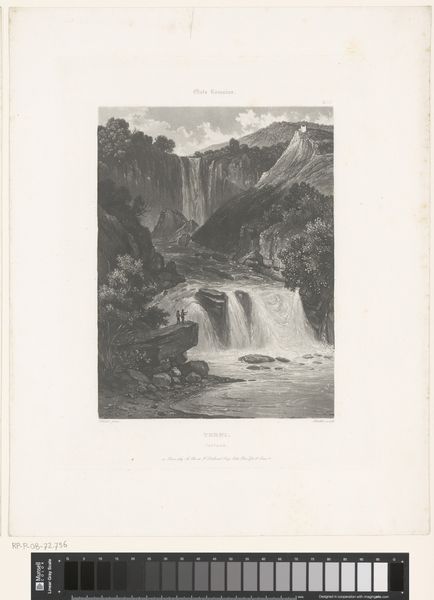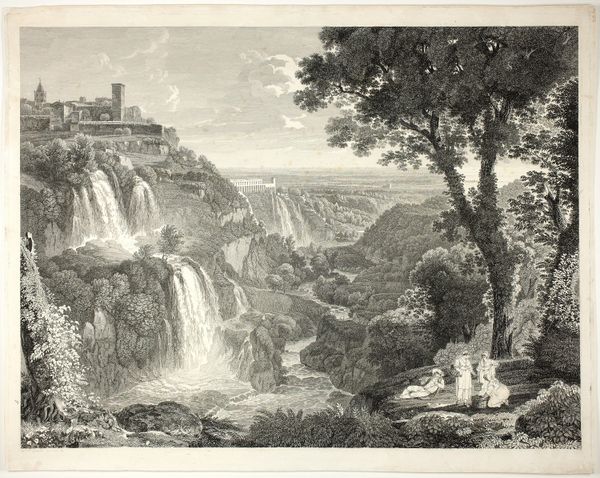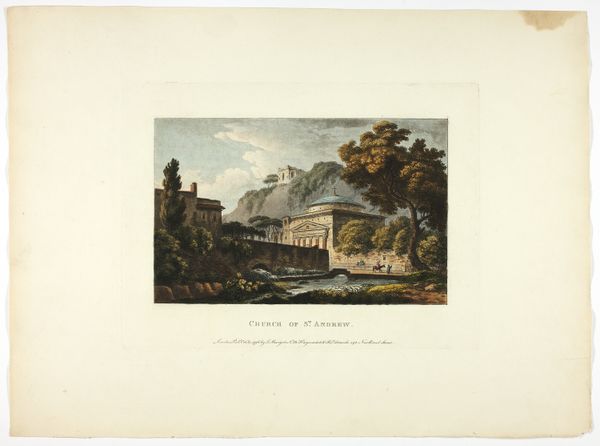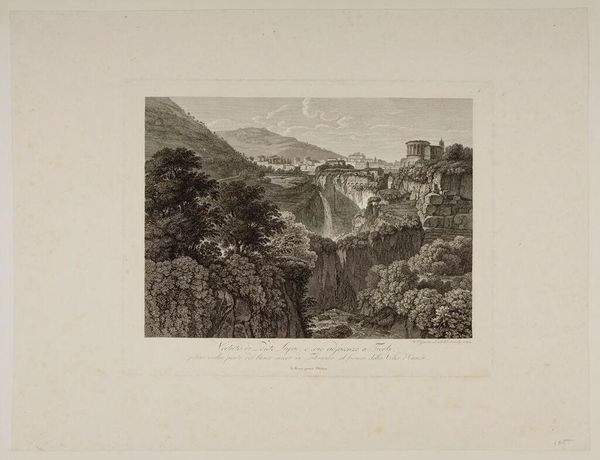
The Cascatelle and Stables of Mecenas, plate thirty-three from the Ruins of Rome Possibly 1798
0:00
0:00
drawing, print, etching, paper, watercolor
#
drawing
#
neoclacissism
# print
#
etching
#
landscape
#
paper
#
watercolor
#
history-painting
Dimensions: 448 × 330 mm (sheet)
Copyright: Public Domain
This print of the Cascatelle and Stables of Mecenas was made by M. Dubourg in the early 19th century. It's an aquatint, a printmaking technique that allows for a wide range of tonal effects. Think about what’s involved in making this artwork. To create it, Dubourg would have started with a copper plate, covering it with a porous ground. Acid would then have been applied to create a texture capable of holding ink, and finally printed onto paper. Look closely and you can almost see the textures of the architecture and cascading water, created through this alchemical process. In this era, printmaking was a form of mass production. These images weren’t unique artworks but were made to be distributed widely, to satisfy a growing appetite for picturesque views of classical ruins. The division of labor in printmaking workshops allowed artists to efficiently reproduce and disseminate images, catering to the demands of a burgeoning market. By understanding its methods of production, we come to understand that this print is so much more than just a pretty picture.
Comments
No comments
Be the first to comment and join the conversation on the ultimate creative platform.
